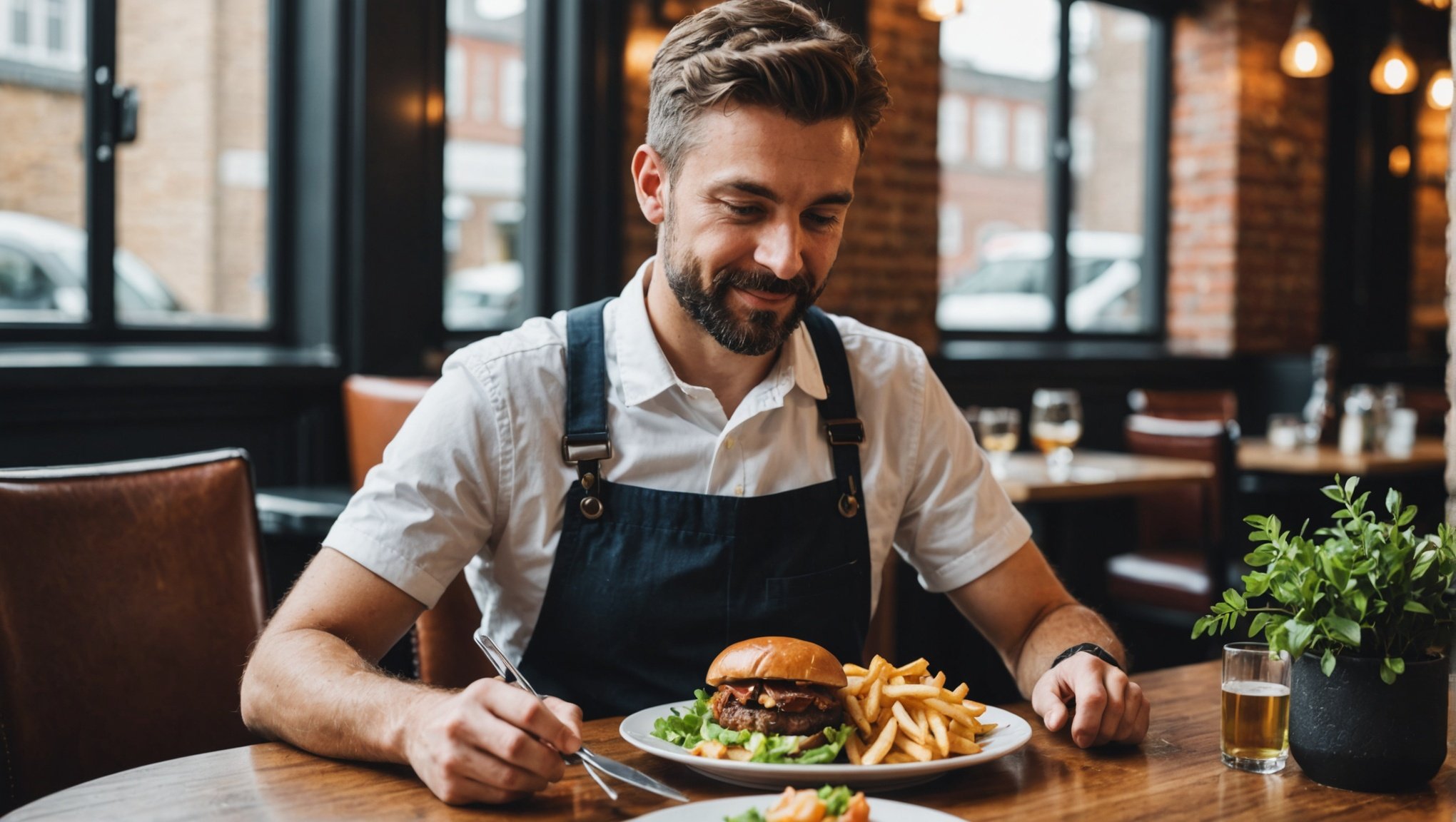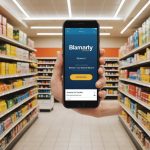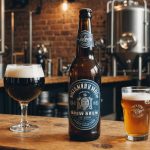Unlocking Success: Top Strategies for UK Restaurants to Enhance Online Ordering Systems
In the rapidly evolving landscape of the UK restaurant industry, embracing online ordering systems is no longer a luxury, but a necessity. With the rise of digital convenience and the increasing demand for seamless dining experiences, restaurants must adapt to stay ahead. Here’s a comprehensive guide on how UK restaurants can enhance their online ordering systems to drive success.
Understanding the Market Landscape
Before diving into strategies, it’s crucial to understand the current market landscape. The online food ordering and delivery platforms industry in the UK is booming, with a market size of £3.8 billion in 2024 and a compound annual growth rate (CAGR) of 15.2% between 2019 and 2024[4].
Have you seen this : Transforming hydrogen storage: meet the delphy solution
Key Players and Market Share
Here is a snapshot of the major players in the UK online food ordering and delivery market:
| Company | Market Share (%) 2025 | Revenue (£m) 2025 |
|---|---|---|
| Just Eat.co.uk Ltd | 34.6% | 1,097.4 |
| Deliveroo plc | 28.5% | 1,083.7 |
| Uber Technologies Inc | 16.8% | 638.9 |
This competitive landscape highlights the importance of having a robust online ordering system to attract and retain customers.
Also to discover : Top Strategies for UK Construction Companies to Minimize Waste and Boost Sustainability
Streamlining Operations with Integrated Platforms
One of the most effective strategies for enhancing online ordering systems is to use integrated platforms that streamline operations from ordering to delivery.
Comprehensive Platform Features
Platforms like Olo and Slerp offer a range of features that can significantly improve the efficiency and customer experience of online ordering:
- End-to-End Automation: Platforms like Slerp provide fully automated end-to-end delivery with tracking and customer support, eliminating the need for manual interventions such as emails and forms[1].
- Seamless Ordering and Payment: Olo’s platform allows for seamless checkout processes, including mobile wallets and card-on-file support, which can drive sales and reduce fraud[2].
- Centralized Management: Zonal Delivery offers centralized management for multi-channel and multi-unit menu management, including direct order integration and dynamic prep time management[3].
Example: Olo’s Impact
Olo’s platform has been instrumental in helping restaurants like Carl’s Jr. and Hardee’s become digitally relevant. According to Phil Crawford, Chief Technology Officer at Carl’s Jr. and Hardee’s, “The speed to market and the true partnership that we’ve fostered over this short time have made Carl’s Jr. and Hardee’s digitally relevant. As we look toward the future and define our roadmap, we can count on Olo.”[2]
Leveraging Data for Personalized Customer Experiences
Data is the backbone of any successful online ordering system. By collecting, analyzing, and acting on customer data, restaurants can create personalized experiences that drive loyalty and repeat business.
Data Collection and Analysis
Platforms like Olo collect data from various sources to create a unified view of nearly 100% of guests. This data can be used to trigger 1:1 marketing messages and tailor the dining experience to individual preferences[2].
Example: Using Guest Data
Art Kilmer, COO of a restaurant using Olo, noted, “We’ve gained access to valuable insights like Guest Lifetime Value (GLV), which enable us to not only customize the dining experience but also to tailor our culinary innovation and growth to the preferences and desires of our guests. That’s a huge unlock.”[2]
Implementing Loyalty Programs and Rewards
Loyalty programs are a powerful tool for retaining customers and encouraging repeat orders. Here’s how restaurants can implement effective loyalty programs:
Custom Rewards Programs
Platforms like Slerp allow restaurants to create custom rewards programs tailored to their brand and customers. These programs can be integrated with transactional and customer data to offer personalized rewards[1].
Example: Slerp’s Rewards Program
Slerp’s system enables restaurants to use all transactional and customer data for campaigns, automations, and segmentation. This helps in creating targeted loyalty programs that resonate with customers and keep them coming back.
Enhancing the Customer Experience Through Delivery Services
Delivery services are a critical component of online ordering systems. Here are some strategies to enhance the delivery experience:
Direct Delivery and Marketplace Integration
Olo’s platform allows for direct delivery at scale with integrations to marketplace delivery services, covering 99.9% of the U.S. and similar coverage in the UK. This ensures that restaurants can expand their reach without compromising on the quality of service[2].
Seamless Integration with Major Delivery Providers
Zonal Delivery offers seamless integration with major online delivery service providers like Uber Eats, Deliveroo, and Just Eat. This simplifies multi-channel and multi-unit menu management, enhancing efficiency and customer satisfaction[3].
Optimizing Front-of-House Operations
While online ordering is crucial, the front-of-house experience remains vital for dine-in and takeout customers. Here’s how restaurants can optimize these operations:
All-in-One Waitlist and Table Management
Olo’s Host platform provides an all-in-one waitlist, reservation, order, and table management tool. This can save significant time for staff, with Host users saving 30 minutes of manual work on average for every 100 parties seated[2].
AI-Powered Restaurant Management
Nory, an AI-powered restaurant management system, guides teams to increase operational performance and profitability. It uses AI-powered workflows for demand forecasting, supply chain, and staff management, ensuring data-based decision-making and consistent operational performance[3].
Utilizing Social Media and Marketing
Social media and restaurant marketing are essential for attracting new customers and retaining existing ones.
Social Media Integration
Restaurants should integrate their online ordering systems with social media platforms to reach a broader audience. For example, accepting orders directly from customers via Google Business Profile can increase visibility and convenience[1].
Example: Social Media Campaigns
Délifrance’s Smart Guide emphasizes the importance of social media in driving sales and enhancing the customer experience. According to Stéphanie Brillouet, Marketing Director at Délifrance, “Although the foodservice sector is showing strong signs of recovery, operators are now facing a new set of difficulties. Therefore, we’re pleased to share our expertise in our new Smart Guide which is full of mouth-watering recipes, actionable tips and low-cost solutions to help foodservice operators weather the storm over the coming year.”[3]
Practical Insights and Actionable Advice
Here are some practical tips and actionable advice for UK restaurants looking to enhance their online ordering systems:
Key Features to Look For in an Online Ordering Platform
- Automation: Look for platforms that automate end-to-end delivery and order management.
- Data Analytics: Ensure the platform collects and analyzes customer data to personalize experiences.
- Loyalty Programs: Implement custom rewards programs to retain customers.
- Delivery Integration: Opt for platforms that integrate with major delivery service providers.
- Social Media Integration: Use social media to accept orders and promote your business.
Example Checklist for Choosing an Online Ordering Platform
- Does the platform offer automated end-to-end delivery?
- Yes, platforms like Slerp and Olo provide this feature[1][2].
- Can the platform collect and analyze customer data?
- Yes, Olo’s platform is known for its comprehensive data collection and analysis capabilities[2].
- Does the platform support custom loyalty programs?
- Yes, Slerp allows for custom rewards programs tailored to your brand and customers[1].
- Is the platform integrated with major delivery service providers?
- Yes, Zonal Delivery integrates with Uber Eats, Deliveroo, and Just Eat[3].
- Can the platform be integrated with social media?
- Yes, accepting orders via Google Business Profile is an example of social media integration[1].
Enhancing online ordering systems is a multifaceted task that requires careful consideration of various strategies. By integrating comprehensive platforms, leveraging data for personalized experiences, implementing loyalty programs, optimizing front-of-house operations, and utilizing social media, UK restaurants can significantly improve their customer experience and drive business success.
In the words of Tim Chapman, Chief Commercial Officer at Zonal, “With the launch of Zonal Delivery, we are giving our customers the opportunity to capitalize on this growing market and enhance their delivery operations, increase efficiency in their hospitality venues and drive profits through delivery channels.”[3]
By adopting these strategies, restaurants can not only survive but thrive in the competitive UK hospitality industry.











